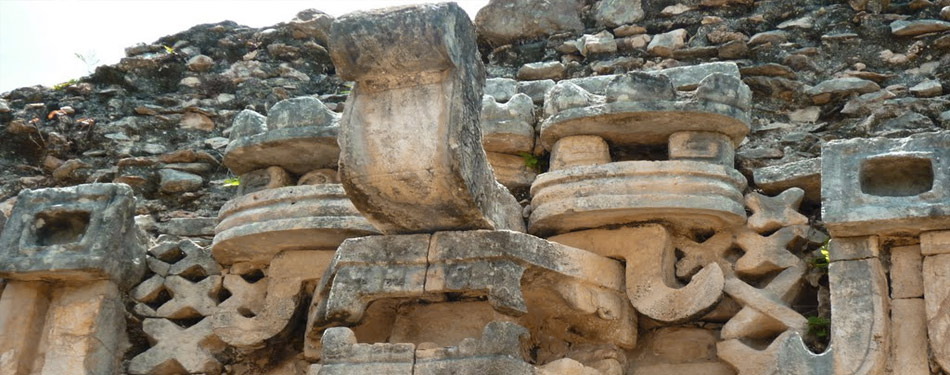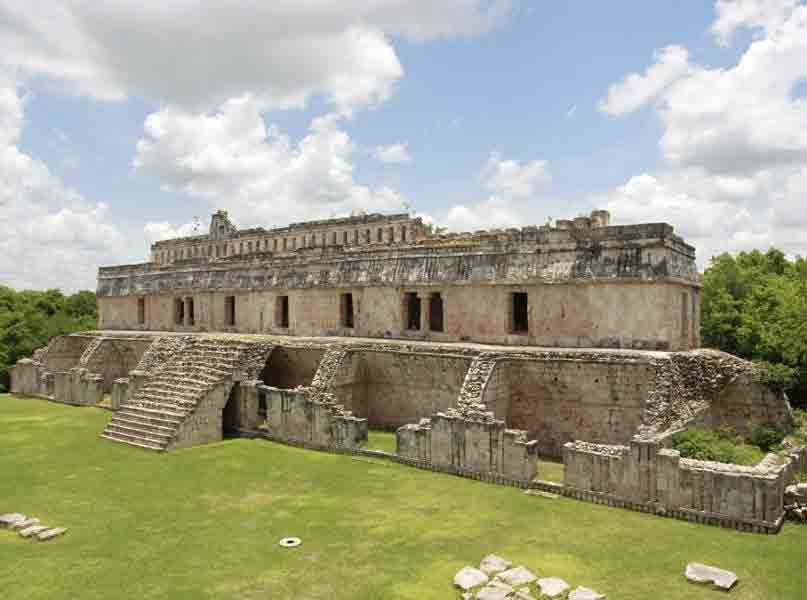
- Date: 13/02/2018
Puuc, the route of the Mayan highlands
"Puuc" means mound or mountainous area, but we will show you that the elevations along the way can be amazing.
Archeology in all its stages: in the process of repair, completely restored and another, still fighting against the ravages of nature and time.
Fill your senses of the ancestral Mayan culture through this journey
The Puuc Route is one in which a set of Mayan archaeological buildings is located, but which differs from the characteristic style of that culture, this style is known as Puuc.
The grotto of Loltún and the ruins of Labná, Xlapak, Sayil, Kabah and Uxmal are part of this tour that you can visit only 80 kilometers south of Mérida. Although each traveler can set the route according to their convenience of time, interest and budget, it is advisable to follow the route in the order mentioned above for a matter of schedules.
- Loltún, a colossal cavernous system. You will find yourself in a mystical landscape, these caves are the largest in the Yucatan Peninsula and were used by the Maya as a refuge and to perform rituals; this is demonstrated by the cave paintings inside, the amazing work in bas-relief of the piece known as "The Warrior of Loltún" and the vault that resembles that of a catedral, through which the sun's rays are filtered by projected games of light and shade that still captivate its visitors. It is estimated that its extension is about 10 kilometers, of which only 2 have been conditioned to be explored, the tour must be undertaken with the help of a guide.
- Labna, the most famous arch in Mérida. It is one of the oldest archaeological sites in the region where it is thought that more than 2,000 people once lived between 750 and 1000 AD, it is an extensive plain of white roads that still has not been explored in its entirety by archaeologists; however, four of the main buildings are being repaired. Some of the most remarkable aspects of this place are the houses with thatched roofs, the "chultunes" which are wells in the form of screens that still serve to collect rainwater, and the beautifully ornamented arch, formed by two small columns to their sides, each with an entrance as for sentinels.
- Xlapak, where the god Chaac inhabits. In this place, important discoveries have been made of imposing buildings adorned with masks of Chaac, the divinity responsible for rain and water in the Mayan cosmogony. This place is made up of 2 main structures on a base, which is considered a palace since inside it houses 9 rooms, and has several entrances on its sides, each with the image of the god that assured them a good harvest.
- Sayil, "the place of the ants". Among the constructions that make up this archaeological site, a majestic palace of 3 levels stands out, 85 meters high and with the same number of interior chambers, experts believe that perhaps it served as a public administration building, it is believed that in its time of splendor there lived more than 20 thousand people here. Other distinctive places of Sayil are: the viewpoint, a temple at the southern end, a wall dedicated to the game of Mayan ball and a zone of stelae that have not yet been deciphered.
- Kabah, the "Lord of the mighty hand". This is another extensive archaeological zone that is divided by a road that crosses it. It is believed that it was an important city, not only because of its size, but because there was a white road that communicated it with Uxmal, it is the city with the largest chultun in the region and is also mentioned in the Chilam Balam, compilation of books that relate important events of the Mayan civilization.
- Uxmal, the favorite of the white roads. Uxmal is the best preserved Mayan archaeological site of the Puuc Route, and the second in importance after Chichén Itzá, its majestic buildings date from 500 a.C and towards the 9th and 12th centuries it was the seat of the Mayan political and economic power of the region. The pyramid known as the Temple of the Fortuneteller measures almost 40 meters in height and by its size in extension, the rest of the buildings can also be considered palaces such as “The Governor’s Palace”, "The Quadrangle of the Nuns" and the "Temple of the Doves". At this site, in addition, you can attend a nighttime light and sound show.

In addition, you can visit other tourist sites such as the town of Tekax, "The Eco-Museum of Cacao" and The Calcehtok Grottos. The entrance to all these archaeological sites has an accessible cost and they have basic sanitary services and some food and crafts options.
